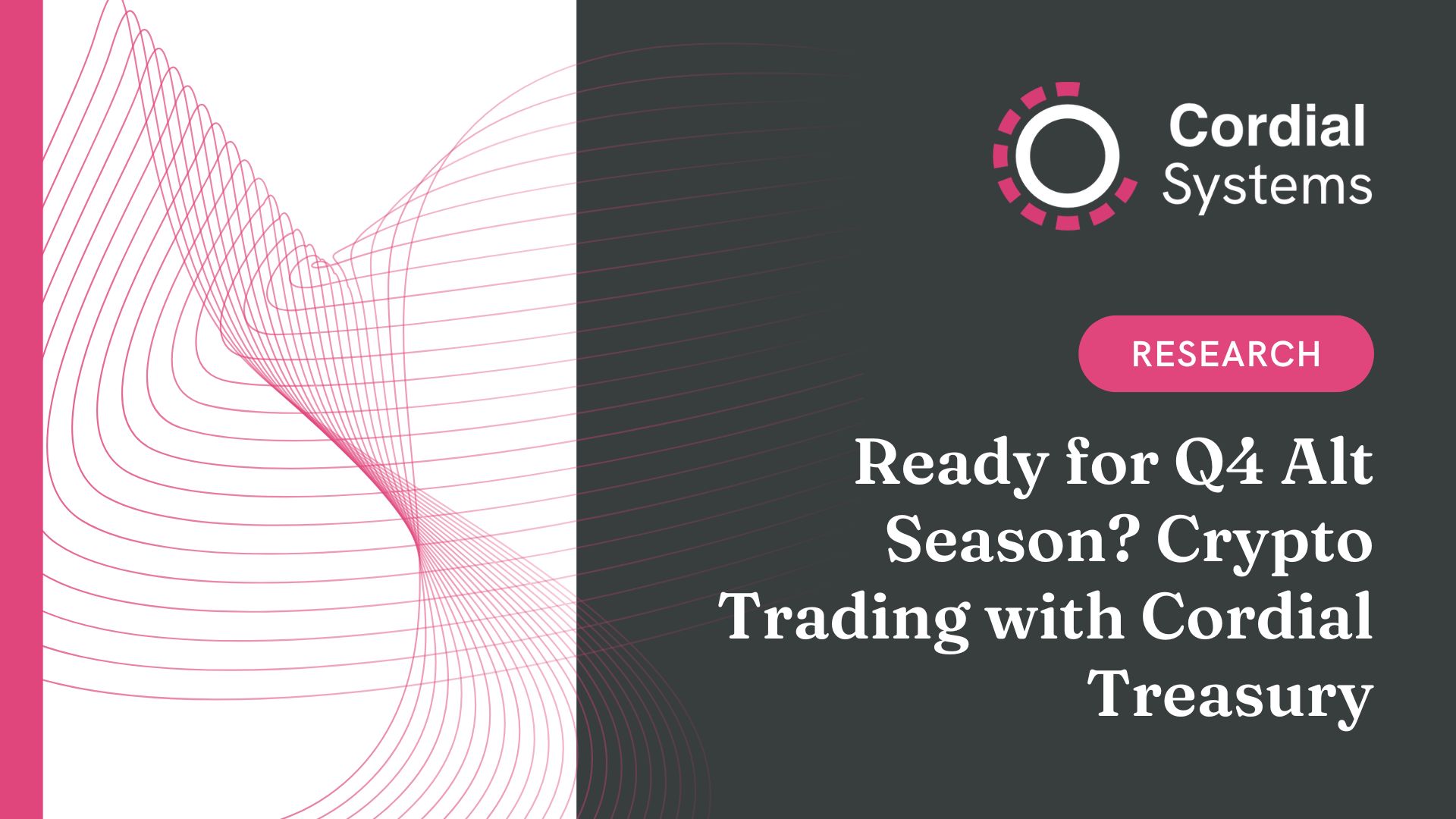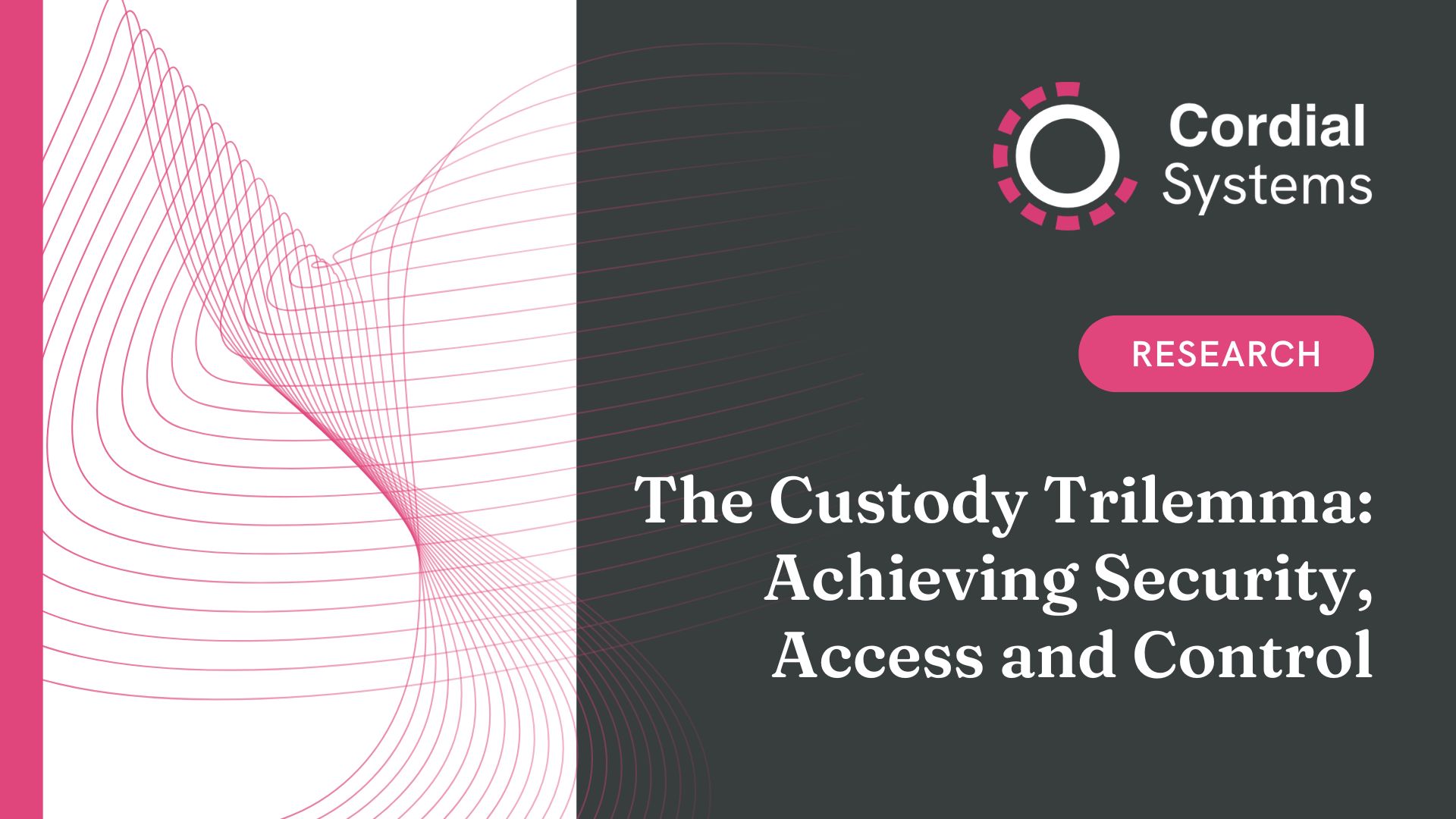
By Haden Patrick, Cordial Systems Director of Business Operations
It is the end of July and the crypto conference circuit is finally giving everyone a breather. The rooftop parties have stopped blasting house music, the swag-bag T-shirts are stacking up in closets (for the record, our new Cordial t-shirts just landed and they are too good to stay folded—drop me a note on LinkedIn if you want one shipped your way!), and most founders are busy rehearsing pitches for friends and family over backyard barbecues. If you work in product, you know what that means: the annual summer roadmap review. While the sales team is chasing sunscreen and vitamin D, the devs are still in the office shipping features that cannot wait until autumn. They say spray-on tans were made for devs who haven’t seen daylight since the last release.
I spent the first half of 2025 walking those convention floors, trying to see which theme would dominate the chatter. It was not gaming, it was not the metaverse, and it definitely was not another celebrity-influenced NFT drop. The hot topic was cross-border payments. If you had a dollar for every booth promising to “settle value globally in seconds,” you could buy the entire venue and turn it into a private bowling alley.
The pitch is simple. Today, sending money across borders is an exercise in guesswork and waiting. A wire from New York to Paris disappears into the correspondent banking maze, where fees collect like barnacles and arrival times stretch to three or four business days. According to the Bank of England, traditional cross-border rails cost the global economy tens of billions each year, while Deloitte estimates total yearly flows north of 150 trillion dollars. Stablecoins, the story goes, fix that with one click.
The problem is that most of the payment apps vying for this market only let customers deposit fiat. They sweep dollars or euros into a stablecoin such as USDC on a single network, then call the job done. A team that can accept a wide range of digital assets at the door, convert them into stablecoins under one roof, and push those tokens down the settlement pipe without limitation brought on by a single blockchain will entice customers by being agnostic in protocol.
What Cross-Border Payments Actually Are
A cross-border payment is any transfer of value between parties who live, work, or bank in different jurisdictions. The moment the sender and receiver sit under separate regulatory umbrellas, the money has to travel through a patchwork of correspondent institutions, foreign-exchange desks, and batch settlement windows. Every hop takes time. Every hop extracts a toll. When the payment finally clears, finance teams on both sides still need to confirm that the funds hit the correct account, in the correct currency, and at the correct amount.
Blockchains collapse that chain of custody into a single ledger update that everyone can see. Stablecoins go a step further by anchoring the transaction value to a currency that businesses already understand. The payer approves a transfer, the recipient sees the balance in seconds, and the public chain provides an immutable receipt. Settlement becomes communication: if you can text, you can pay.
The Appeal of Stablecoins and the Risk of Tunnel Vision
Stablecoins succeeded where other crypto assets struggled because they eliminated volatility from the equation. Treasury managers cannot risk holding payroll funds in a token that might drop ten percent before salaries go out. A dollar-pegged coin solves that, yet preserves the programmable nature of the medium. This combination has convinced fast-growing exporters, payroll platforms, and e-commerce aggregators to trial blockchain settlement without having to explain Bitcoin price charts to the CFO.
That success can create tunnel vision. Many payment providers think the only on-ramp that matters is a bank account. They assume users will gladly wire dollars into their platform, then let the service mint the stablecoin internally. In reality, a sizeable percentage of potential payers already keep working capital in on-chain form. The DeFi trading desk that invoices you in Dai, the gaming guild that earns revenue in Solana tokens, the digital artist who holds royalties in Ethereum: build the flexibility and let users decide where they want to pull in capital.
Liquidity Lives On Many Chains
The universe of digital assets continually expands. While Ethereum remains the center of gravity, sidechains, layer-twos, and alternative layer-ones are competing for transaction share. Each ecosystem attracts its own user base, liquidity pools, and financial instruments. If your payment product only recognises one network, you have implicitly bet your future on that chain never falling out of favor. A sudden spike in gas costs, a regulatory headwind, or a security incident can send users elsewhere overnight. The more adaptable your intake valve, the easier it is to keep value flowing, even when one protocol runs into trouble.
Accepting deposits in a variety of tokens also creates natural foreign-exchange efficiency. When the incoming asset is already digital, the conversion path to a stablecoin can be a single atomic swap inside your own treasury. The user does not suffer slippage on a public order book, you avoid an extra fiat leg, and the entire loop finishes in minutes. Multiply that across thousands of transactions per day and the savings speak for themselves.
Architecture Matters More Than Marketing
Expanding the roster of accepted assets is not as easy as hooking into a new liquidity API. Each supported chain brings unique signing algorithms, address derivations, and security models. If your private keys live in someone else’s hardware-security-module fleet, you are stuck waiting for that vendor to ship an upgrade before you can launch a new network. Time-to-market balloons, your roadmap slides, and a competitor who solved custody in house walks away with the customer.
The alternative is a self-hosted treasury stack built on multi-party computation. MPC replaces the single private key with several encrypted key shares distributed across independent nodes. A quorum of nodes collaborates to sign each transaction, so no single device can leak the secret. Because the cluster runs inside your own infrastructure, you decide when to add a protocol interpreter, you decide how many nodes to spin up for fault tolerance, and you control the audit logs regulators will want to see.
What Cordial Treasury Brings to the Table
Cordial Treasury was designed for precisely this challenge. The platform installs wherever an institution feels safest, whether that is an on-premises data center, a private cloud region, or a hybrid mesh that spans both. Out of the box it understands more than sixty blockchain networks. For anything else, engineers can slot in Cordial’s open-source Crosschain library and push the updated container to production. The longest wait time is the coffee break between a merge and a deployment slot.
Every policy decision lives on the nodes you operate. Transaction limits, compliance checks, and multi-sig approvals are enforced locally, not in the dashboard of a third-party SaaS provider. Exchange API keys can sit in the same vault as private keys, letting your treasury rebalance capital automatically between wallets and order books. The finance team keeps the reconciliation workflow they already trust while gaining a settlement rail that clears in minutes instead of days.
Summer Lull, Winter Runway
Right now the market is quiet. Conferences will ramp up again in September, and the booths will look remarkably similar to last year’s unless someone brings a new story. The teams that walk in with an all-asset on-ramp will stand out because they address the one pain point everyone else glosses over. They will show a live demo that accepts ETH on one network, SOL on another, swaps both into a regulated stablecoin, and settles a supplier invoice in under sixty seconds. They can do it because their custody layer never cared which token knocked on the door.
Stablecoin settlement is the wedge that leads businesses into Web3. Multi-asset intake is the lever that widens that wedge into a full-scale adoption curve. Treasury architecture decides whether you can pull that lever, and Cordial Treasury is the most direct route to building it yourself. The spray-on tans can wait; the roadmap cannot.
Ready to Build Without Limits
If you are mapping out a payment product for the next funding round, ask whether your custody stack can add a chain tomorrow or whether you need to file a support ticket and hope. If you are evaluating providers, look for one that treats every digital asset as a first-class citizen instead of an edge case. Look for policy governance you can rewrite in your own IDE, not a vendor backlog. Above all, look for a platform that keeps your keys, signatures, and audit trails inside your own risk perimeter.
The future of cross-border payments belongs to whoever solves liquidity flexibility first. Cordial Treasury is already there, and the summer lull is the perfect time to catch up.





